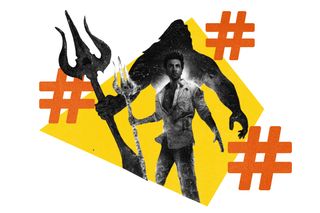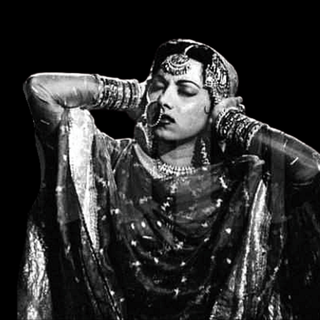
How Bollywood Is Losing Its Credibility
The call to boycott ‘Brahmastra’ is a symptom of a larger issue: the cultural loss of suspended disbelief.

No sooner did the trailer for Ayan Mukherjee’s star-studded Brahmastra release, than #BoycottBrahmastra began trending on Twitter. Among the many complaints against the trailer was that Ranbir Kapoor, in the film’s lead role, was seen entering a temple without removing his shoes. Others were less specific; accusations of drug addiction within the industry began to resurface, along with the nepotism charge and, finally, a vague invocation of the late actor Sushant Singh Rajput as a cultural martyr.
A perusal of tweets tagged with the trending hashtag shows that there is no clear consensus as to why so many people want to boycott the film — except for a giant mishmash of many feelings operating under a collective clarion call. There is frustration, disillusionment, and the usual right-wing rhetoric at play. But there is also something more: the present moment is symptomatic of a general ennui toward anything that Bollywood has to offer, that has seeped beyond fleeting social media siloes.
The trouble arguably began when the industry, as a whole, tried to instantaneously align with the ruling party’s vision ever since it came into power in 2014. Since then, a spate of bland, contrived films spawned a genre of nationalism that was much more direct, much less veiled than ever. The Prime Minister also met with leading figures from the industry, all of whom jostled to fit into a selfie with him, eagerly brandishing their toed-line credentials to the nation.
Related on The Swaddle:
Prime Minister Modi’s Meeting With Bollywood Has Taken ‘Manels’ to the Next Level
Audiences have been subjected to dreary fare whose sole purpose is to evoke nationalistic fervour — Uri: The Surgical Strike Story, Manikarnika, The Accidental Prime Minister, Kashmir Files, and others are examples of a few. These films became something to grin and bear: a part of our new cultural staple, interspersed with the rise of OTT media and the regular “class” fare featuring exotic locales and top-billed stars. But the monotony of it all started to feel dull: there was little that promised the fantasy, the suspension of disbelief, and the magic of the movies that we grew up falling in love with.
Enter the “pan-Indian” film, with Baahubali serving as the prototype for larger-than-life action, mythology, and fantasy that captivated audiences across the country. It was made in what mainstream media dismissively and unilaterally refers to as “the south” — since then, the narrative has shifted in favor of calling big–budget films dubbed in Hindi, “pan Indian” cinema.
Now, ahead of Brahmastra’s release, media coverage is breathless in prematurely calling it the biggest pan-Indian film to come out of Bollywood. But the backlash against the trailer shows there are many things that Bollywood, in its bid to swim with the tide, has missed. It wasn’t until Sushant Singh Rajput’s death by suicide nearly two years ago, now, that some of them surfaced — an event that also catalyzed the churn taking place among audiences of entertainment.
Related on The Swaddle:
Bollywood Doesn’t Just Protect Predators, It Produces A Culture That Glorifies Them
For one, it was resolutely stubborn in not addressing the toxic nepotism it was repeatedly been accused of. All film industries across the country are complicit — but none more defensive of the charge than Bollywood. The difference between Bollywood and other industries is that with Rajput’s death, audiences now had what they felt to be representative proof of a dangerous culture of exclusivity and clique-ishness inside the Hindi film industry.
Then, media channels spun this fact into discrediting individuals within Bollywood for their alleged drug use, a tactic that distracted from the devastating toll of the pandemic at the time and, simultaneously, supercharged right-wing sentiments against Bollywood.
If the spate of nationalistic films distanced some sections of audiences from it, the elitism and gatekeeping that came to light with Rajput’s death distanced some others. In other words, it gave up on its commitment to suspend our disbelief, or even push our intelligence as an audience — alienating people across the board. In the process, it may not be much of a stretch to say that Bollywood, caught between the government’s cultural re-scripting and an increasingly confused zeitgeist, is losing its way.
Rohitha Naraharisetty is a Senior Associate Editor at The Swaddle. She writes about the intersection of gender, caste, social movements, and pop culture. She can be found on Instagram at @rohitha_97 or on Twitter at @romimacaronii.
Related


Woe Is Me! “The Bickering Married People in My Life Make Marriage Seem Like a Curse. Am I Wrong?”
